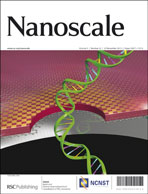Nanoparticle accumulation and transcytosis in brain endothelial cell layers†
Abstract
The blood–brain barrier (BBB) is a selective barrier, which controls and limits access to the central nervous system (CNS). The selectivity of the BBB relies on specialized characteristics of the endothelial cells that line the microvasculature, including the expression of intercellular tight junctions, which limit paracellular permeability. Several reports suggest that nanoparticles have a unique capacity to cross the BBB. However, direct evidence of nanoparticle transcytosis is difficult to obtain, and we found that typical transport studies present several limitations when applied to nanoparticles. In order to investigate the capacity of nanoparticles to access and transport across the BBB, several different nanomaterials, including silica, titania and albumin- or transferrin-conjugated gold nanoparticles of different sizes, were exposed to a human in vitro BBB model of endothelial hCMEC/D3 cells. Extensive transmission electron microscopy imaging was applied in order to describe nanoparticle endocytosis and typical intracellular localisation, as well as to look for evidence of eventual transcytosis. Our results show that all of the nanoparticles were internalised, to different extents, by the BBB model and accumulated along the endo–lysosomal pathway. Rare events suggestive of nanoparticle transcytosis were also observed for several of the tested materials.


 Please wait while we load your content...
Please wait while we load your content...